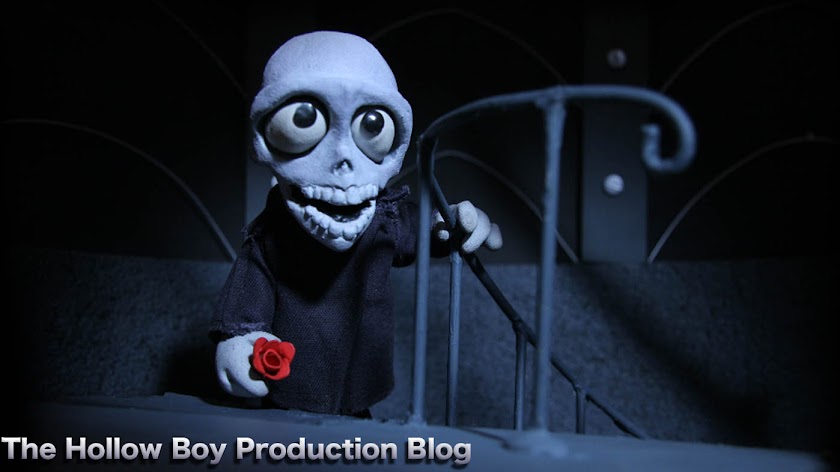Old "rocket ship jungle gym" pieces like the one above, popular in playgrounds around the late 50's through the 60's, were the source of inspiration for the location of the climax in my film. I tried to base my design on the original so that it could still be identifiable as a "rocket ship jungle gym" but I also took liberties with the design for the functionality it needed to serve in the story.
Materials used: Foam board for the interior construction of the rocket and window frames, card stock construction paper for the curved surfaces, spackle for shaping and filling in seams, balsa wood for the bars in the windows, counter sink wood screws for the big bolts in front, push pins for the small rivets, and silver and flat black spray paint.
1. Translate graphite drawings to a working full scale schematic.
2. Construct honeycomb frame for card stock construction paper
to wraparound (based on schematic measurements).
3. Begin to fill in unwanted seams with spackle while using sand
paper to makes edges flush.
4. Paint with flat black to better identify imperfections in
construction then repeat spackle process.
5. Flat black paint application/spackle process repeated once more.
Window template measured for proper placement.
6. Watered down spackle applied to better identify small
imperfections.Windows cut out.
7. Final flat black paint applied to rocket.
8. Silver paint applied, window frames applied with push pins.
9. Bars in windows applied as well as "mouth piece" with screws and
additional "rivets."
10. Fins and final painting detail applied.
To be honest I didn't know if this process was going to work but I figured it would be worth a try. Planning definitely helped out as well as following the measurements on the schematic. If your trying to build something, or create anything for that matter, and you find yourself not really knowing where to start, just start with what you know. I knew what I wanted to build based off of my drawings and that informed the steps I took in the construction of the rocket.
Example: Fiddlesticks! I need my rocket to be round but what materials would allow me to do this? Foam board works well for solid rudimentary shapes and card stock construction paper would fit around the form while reinforcing the structure. Yeah that sounds good! But what about gaps? I want a smooth finish. Well spackle is sand-able, maybe I could work with that to get what I want...
Of course it wasn't that simple but this form of planning is an abbreviated version of what I had to think about when building the rocket and it definitely helps when exploring creatively uncharted territories.
-Fonz


























































